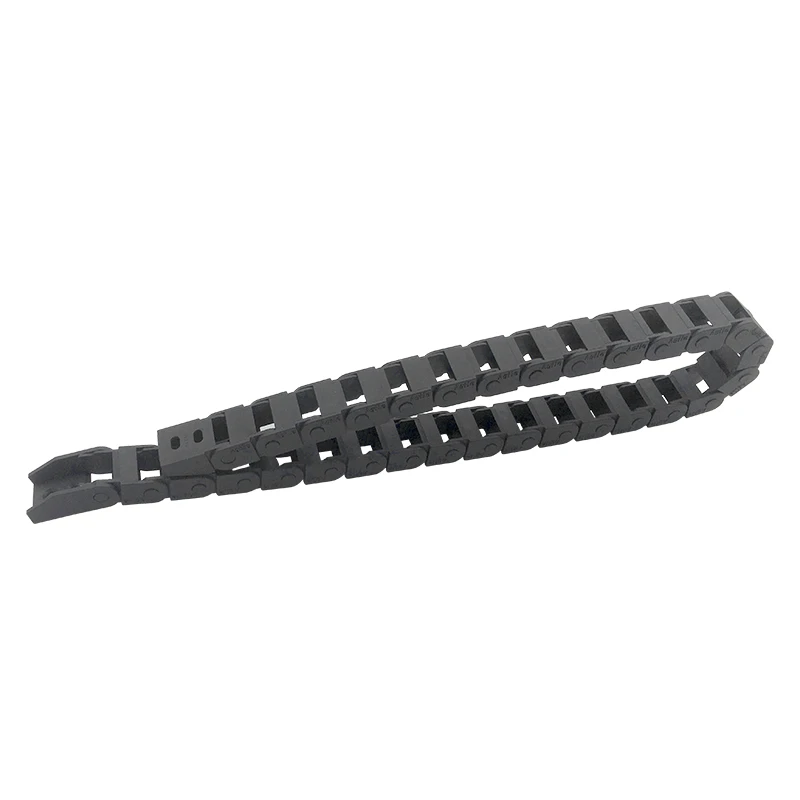drag chain for cnc
Understanding Drag Chains for CNC Machinery
In the modern landscape of manufacturing and automation, CNC (Computer Numerical Control) machinery has become essential for precision engineering. These sophisticated machines offer unparalleled accuracy, allowing for the production of complex parts with minimal human intervention. However, as these machines evolve in terms of capabilities and automation, the need for efficient organization of moving components arises. One integral component that addresses this need is the drag chain.
What is a Drag Chain?
A drag chain, also referred to as a cable carrier or energy chain, is a protective covering that houses and organizes the cables and hoses associated with CNC machines. These chains facilitate the smooth and unrestricted movement of cables as the machine operates, ensuring that they do not tangle or suffer from wear and tear caused by excessive bending or friction.
Drag chains come in various styles and sizes, designed to cater to different configurations and industrial environments. Typically made from durable materials such as plastic or metal, their primary function is to allow for the controlled movement of cables connected to servo motors, electrical systems, and hydraulic lines, while also protecting these components from external elements.
Importance of Drag Chains in CNC Applications
1. Protection of Cables and Hoses One of the primary functions of a drag chain is to protect the cables and hoses from mechanical wear and environmental hazards. In a CNC setting, where components are frequently in motion, having exposed wires can lead to accidental damage, short circuits, or machine malfunctions. By encasing these elements within a drag chain, manufacturers can greatly extend their lifespan.
2. Organized Layout In complex CNC setups, numerous cables and hoses are involved. Without proper organization, the risk of entanglement increases, leading to operational inefficiencies. Drag chains allow for a structured approach, facilitating the neat arrangement of cables that reduces clutter and enhances accessibility for maintenance and troubleshooting.
drag chain for cnc

3. Optimized Motion Drag chains are designed to enable smooth, unhindered movement as the CNC machine operates. They provide guidance to the cables while accommodating the necessary flexing, reducing the risk of tangling while promoting efficient operation. This not only aids in machine performance but also enhances overall productivity.
4. Versatility Available in various shapes, sizes, and materials, drag chains can be tailored to fit the specific requirements of any CNC apparatus. Customization options mean that they can accommodate complex cable arrangements or adapt to unique machine dimensions, giving manufacturers flexibility in design.
5. Safety Beyond organizational and functional benefits, drag chains also promote a safer work environment. By protecting cables and reducing clutter, the risk of accidents—such as tripping or entanglement—can be minimized. Additionally, preventing cable damage helps avoid potential electrical failures that could pose safety risks.
Selecting the Right Drag Chain
When choosing a drag chain for a CNC machine, several factors should be considered
- Dimensions and Load Capacity The drag chain must accommodate the number and type of cables or hoses required, while also being robust enough to handle their weight during operation. - Bend Radius Understanding the necessary bend radius is crucial. The drag chain must be able to flex without damaging the internal cables during movement. - Environmental Conditions Consideration should be given to the working environment. For example, harsh chemicals, high temperatures, or exposure to water may necessitate the selection of specialized materials. - Installation Ease Depending on the CNC setup, some drag chains may offer easier installation processes or provide features such as snap-open lids for quick access.
Conclusion
Drag chains are a pivotal component within the realm of CNC machining. They not only streamline the organization of cables and hoses but also enhance the operational efficiency and safety of machinery. As the industry continues to embrace more complex and technologically advanced systems, the role of drag chains will undoubtedly become even more significant, providing crucial support to the evolving needs of modern manufacturing. For any CNC setup, investing in a quality drag chain system is a step towards optimizing performance and ensuring longevity.








